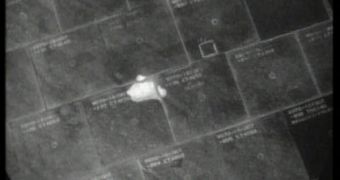After analyzing the results of the latest heat shield inspection, engineers and mission controllers at NASA determined that space shuttle Endeavour's heat shield is in good condition for landing.
Scientists with the American space agency say that the dint a past inspection found on the orbiter's underbelly should not be a cause for concern. They add that the small damage will not hinder the shuttle's ability to reenter Earth's atmosphere safely.
Endeavour is currently docked to the International Space Station (ISS), carrying out its last mission ever. It arrived at the space lab on May 18, after launching from the Kennedy Space Center (KSC), in Florida, on May 16.
On May 17, one day after launch, the STS-134 crew carried out a routine heat shield inspection. The survey revealed seven areas that appeared to have been slightly damaged during takeoff. One of them exhibited a dint that prompted mission controllers to call for a new inspection.
The latter was carried out on Saturday, May 21, when astronauts aboard the orbiter used the spacecraft's robotic arm to manipulate a sensor-laden pole beneath Endeavour's underbelly. This allowed them to get a closer look at the damaged sites.
They then sent the data back to Earth, where NASA experts combined the information with the results of the first inspection, and with datasets provided by the ISS crew. The latter also snapped images of the shuttle's underbelly, as Endeavour was coming in for docking.
“We're essentially clearing the vehicle for reentry at this point,” says the leader of the NASA Endeavour mission management team, LeRoy Cain. He added that experts at the Johnson Space Center (JSC), in Houston, created a 3D model of the dent.
The damaged site is apparently 0.89 inches (2.26 centimeters) deep, 2.43 inches long and 2.95 inches wide. JSC experts demonstrated that nothing beneath the two affected tiles was actually damaged.
“With the data, to include the laser data that the team was able to acquire from the focused inspection, the analyses team went back and essentially what they did was verify how much tile was still in the cavity, because of course it is more important what remains than it is what is gone,” Cain explained.
“What we're interested in is protecting the structure underneath the tile and the associated systems,” he went on to say, quoted by Space.
“So with that we've cleared the TPS. The vehicle is otherwise in great shape as well. It continues to perform outstanding,” the NASA official concluded.

 14 DAY TRIAL //
14 DAY TRIAL //